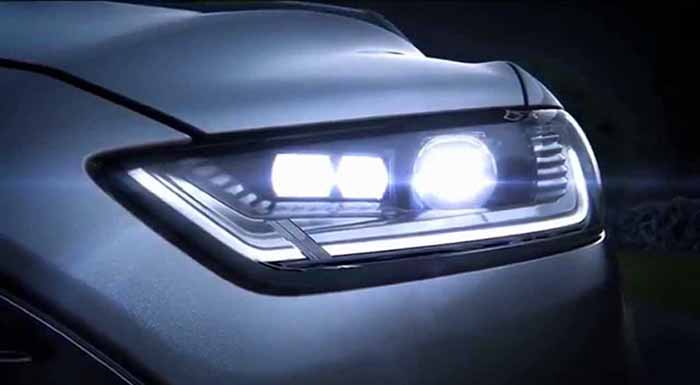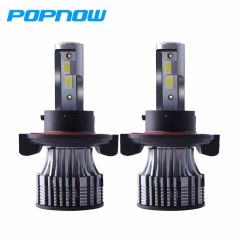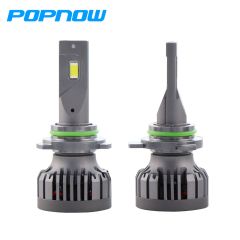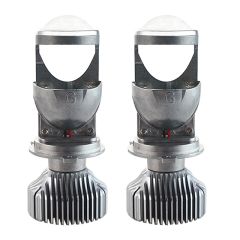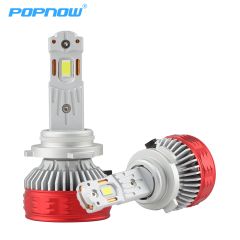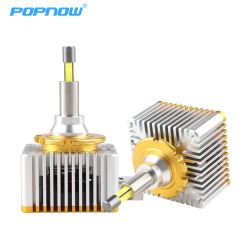Halo headlights were championed by BMW in the year 2000 and originally featured CCFL (Cold Cathode Fluorescent Lamp) technology. Halo headlights, initially, could only be found on BMW model cars, but, after a while, became a customization staple on all makes and models of vehicles. Things changed around 2005 with the introduction of LED halo headlights, and car fanatics split into two camps: pro-CCFL and pro-LED.
Both technologies have their pros and cons, and both are as popular as ever, but which is better? Read on for a comparative analysis of the two leading halo headlight technologies - CCFL vs LED headlights: What is the difference?
Main Differences
CCFL headlights consist of one continuous bulb positioned in a circular shape, producing a solid beam of light. On the other hand, LED consists of many small lightbulbs positioned closely together to create the illusion of one solid beam of light. CCFLs are mostly found on cars dating the early 2000s.
However, they can still be found on certain recent cars today. It’s worth noting that it may be difficult to fit LED lights on a car that came out around the year 2000, as they will have been designed to fit CCFL lights exclusively and thus may require additional modifying. LED lights, on the other hand, are mostly found on contemporary cars, from the mid-2000s onwards.
Safety
When considering the functionality of a car headlight, the first thing that comes to mind is safety – how visible does it make your car, and how well does it light up the road ahead?
LED headlights definitely take the lead on this one, as one of their main advantages is that they produce an ultra-bright beam, affording them the ability to be visible at all times – even while the sun is up! CCFL, on the other hand, only works in darkness.
Additionally, certain CCFL headlights have been noted to get dimmer over time as a result of overuse, which definitely renders them less safe in certain instances, whereas LED maintains the same level of brightness, regardless of overuse. Therefore, from a safety perspective, LED is the most sure-fire and better option.
Durability
Both LED and CCFL headlights are of utmost durability, with CCFL boasting a lifespan of, on average, 50,000 hours, whereas LED headlights last, albeit slightly longer, with an average span of 60,000 hours. Although, in this case, LED offers a marginally longer power-saving advantage, both types of headlights offer enough longevity to last for a number of years and, more often than not, the length of time in which you will own the car for.
However, it is worth noting that CCFL may have a slight durability advantage when it comes to replacement. When a CCFL bulb runs out, all that needs replacing is a transformer, which can be purchased very cheaply. Whereas with LED lights, when just one of the many lights goes out, the whole light needs replaced, which is much more costly.
CCFL lights, however, are more likely to break when fitting and/or changing due to the fact they are made from glass. Thus, they tend to be deemed the more fragile of the two headlights and therefore are recommended to be handled with the utmost care. On the other hand, LED headlights are made of plastic, so they are considered to be less fragile, and therefore less susceptible to breakages.
Aesthetically
LED is definitely the favored headlight for those who love customization, as the color of light produced can be changed easily from the comfort of the driver’s seat. LED headlights can be changed from blue to green to red, at the push of a button, with the help of such installments as Dual Colour LED and ColourSHIFT.
Also, given that LED headlights are made up of smaller lightbulbs, the option is there to change the color of some and produce a beam of multiple colors. This is perfect for the indecisive among us who can’t settle on just one color! It would be worthwhile, however, to check on the legality of having different colored headlights in your country of residence, as it is illegal in certain places.
CCFL lights, on the other hand, feature the aesthetic advantage of producing more of a complete beam of light, given that CCFLs consist purely of one bulb (comparable to the long, tube lights commonly found on the ceilings of warehouses and office spaces), as opposed to LED headlights, which consist of numerous, smaller bulbs. For that reason, CCFLs have the aesthetic advantage of producing a solid beam, whereas LED lights produce more of a broken glow.
Although the fact that you can see individual bulbs in an LED headlight may be off-putting for some, other car enthusiasts prefer this look. Additionally, given that the LED beam is so bright, it may even be difficult for some to notice this.
Some would argue that the CCFL’s complete bulb gives off more of a distinct look, even when the headlight is not in use.
Ease of Control
The aforementioned color-changing feature afforded by LED headlights also has the advantage of being able to be manipulated by remote control or, even better, via a smartphone or tablet. CCFL headlights, on the other hand, can only be controlled from the dashboard of the car.
Cost
It is possible to pick up a CCFL headlight for cheaper than an LED simply because it has been around for longer. LED headlights, on the other hand, can, at times, be expensive, especially the ones that boast a color-changing feature. Also, as already mentioned, it is far cheaper to replace a CCFL transformer than it is to replace an entire LED headlight. Therefore, it would be fair to say that CCFL headlights boast an affordability advantage.
Final Thoughts
Overall, both LED and CCFL boast their own unique advantages, and it’s clear why both are still in use today. LED may be safer, more durable, and more customizable, but CCFL headlights are more aesthetically pleasing and cost-effective.

